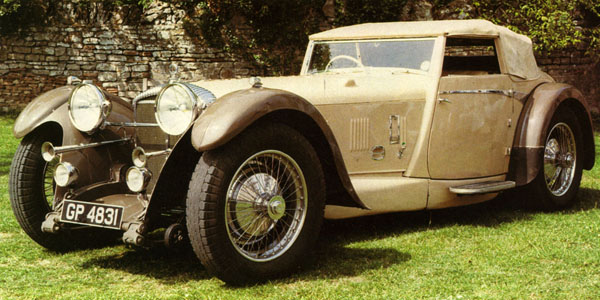The name Daimler and the British royal family have a long association during the 1920s and 1930s. At every state occasion there would be a line of Daimler Double-Sixes each adorned with either a flag – the Royal Standard – or the Royal Crest above each expansive windscreen. These cars featured the unorthodox `Silent Knight’ double-sleeve-valve engine in use throughout the Edwardian years but when there was a change in chief engineer at Daimler, Laurence Pomeroy, the new man set about an engine redesign.
Since he had never favoured the use of low powered engines no matter how refined they were, in 1926 he introduced the Daimler Double-Six engine. This was considered by many to be the most complex power unit ever made for a private car. Pomeroy started off using two of the 25-85 Daimler six-cylinder blocks which he mounted at 60 degrees to each other. To this arrangement he added a cast aluminium crankcase. Each of the engine blocks was split into two groups of three cylinders so there was, in effect, four cylinder heads. Because the cylinder banks were not offset, all the right hand connecting rods had forked big ends, and shared their crankpins with the left side rods.
From this description it is not hard to imagine this 7.0-litre 112 kW engine was quite massive, weighing in at around 2268kg and this made chassis design quite a problem. As it was the chassis had a wheelbase of 4140mm and a track of 1520mm.
England’s King George V never bought a full 112 kW Double-Six, initially having two earlier model Daimlers converted for the V12 engine; two of the smaller 3.7-litre models were added to the Royal fleet late in the 1920s, while three 40-50 limousines and two 30-40s were acquired in an exchange deal in 1930.
At the end of the 1920s Daimler catalogues listed seven different Double-Six chassis and with Daimler coachwork, 15 variations were possible including a good-looking Corsica cabriolet. The sporting models had tuned engines and light bodywork on a short chassis. Pomeroy improved the Daimler range for 1931 by combining a fluid flywheel with an epicyclic pre-selector gearbox to produce something akin to an automatic transmission system. Ultimately the engines were revised in detail, using more aluminium to reduce overall weight.
By 1933 the 30-40 and 40-50 Double-Sixes had been redesignated `40′ and `50′ respectively. Also all other Daimler models had poppet valve engines. The new poppet valve straight eight that was introduced in 1934 did not immediately supersede the Double-Six, as a few V12s were built with poppet valves, including the last ceremonial limousine built by Daimler, expressly for the 1935 Silver Jubilee celebrations.










